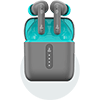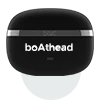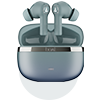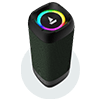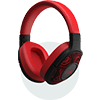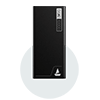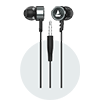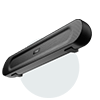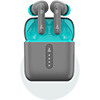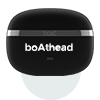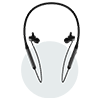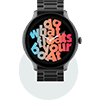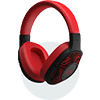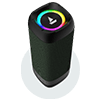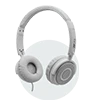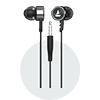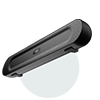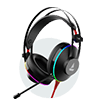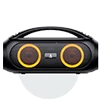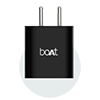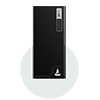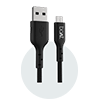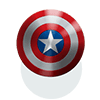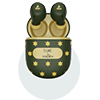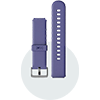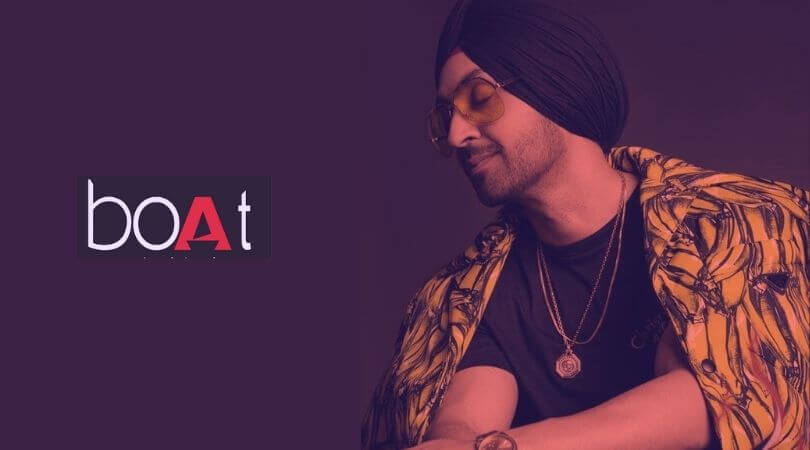
Why name an electronic accessories brand boAt? The 36-year-old co-founder Aman Gupta points to the brand's tagline, ˜plug into nirvana, placed in large letters on a wall of the young start-up's Hauz Khas office in Delhi. When you take a boat, you leave everything behind. You plug into a new zone, he says.
Philosophical meaning apart, the brand has literally plugged into a new zone. Started in 2016, it retails in products such as chargers, Bluetooth speakers and earphones, has already crossed an impressive 1 billion sales in its third year.
It is an impressive show and was done with little outside support. The founders hardly raised any money in the first two years. The only funding round was in May 2018, from Kanwaljit Singh of Fireside Ventures, who invested 60 million in the brand. I was impressed by their ability to spot a white space, the founder's experience, the product quality and right targeting, says Singh. His fund usually invests in early-stage consumer product companies. Gupta sounds assured, saying with a laugh, While others have burn rate, we have earn rate. boAt Lifestyle has remained Ebitda positive from its early days.
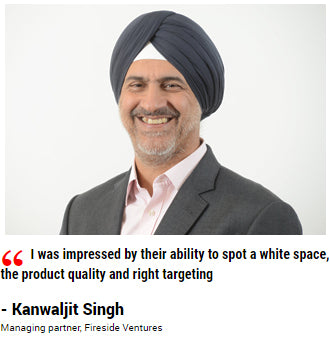
The business model is pretty straightforward. The products are designed keeping Indian customer's particular needs in mind, manufactured in China, marketed over social networks and sold mostly over e-commerce platforms. It seems like an obvious winning bet, but that's not what everyone told him at first.
It is a cluttered space. This is a hypercompetitive market with global and Chinese players. These were the arguments against his idea, when he first sounded it. But, hardly three years later, boAt seems to have survived the killer waves.
Gupta is familiar with the electronics trade. His family has a business running in it, where he worked for three years (2007-2010). This was after completing his chartered accountancy and working in Citibank between 2003 and 2006. In 2010, he enrolled for an MBA at the Indian School of Business (ISB), from where he was placed at KPMG, the auditing firm. It was a brief, six-month stint. I was fascinated by gadgets and electronics, so I contacted JBL by Harman and expressed a wish to work for them, he says.

JBL signed him on. During his two-year stint, Gupta managed the start-up's offline distribution through stores such as Croma and Reliance Digital. A little later, he also got into product management. His job was to identify the right products for the Indian market, and the lessons learnt here came in handy during product development at boAt.
Gupta says he was exposed to the changing trends in the audio space, in India and other geographies. He also discovered that, globally, consumers were willing to look beyond legacy brands. They were ready to give new brands a try.
boAt was first imagined in 2014 and finally launched in 2016. The two years were spent on research and zeroing in on the right products. The two founders, Gupta and Sameer Mehta, each put in 1.5 million from their personal savings to start the company. We did a lot of use-case analysis, says Mehta. Our research showed that buyers were looking for tangle-free ear phones at a reasonable price and a longer cable. They were also bored with plastic microphones. So we launched long cables, which were tangle free, and metal earphones. We also made our product very EDM (electronic dance music) focused because the Indian customer likes a punchy sound experience.
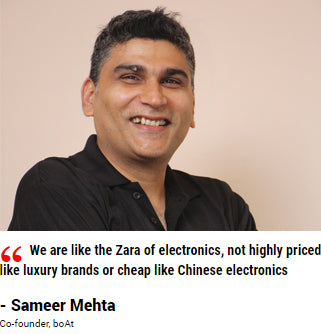
One of the initial challenges was convincing contract manufacturers in China to produce small volumes, while the boAt team designed the product and the packaging. Gupta recalls urging them: Please support us now, we will order more later. They were then shipped to the Indian company ” where only a minimum inventory was maintained ” from where Amazon picked up packages for distribution. Between 2014 and 2016, company worked as a distribiutor of global audio brand, House of Marley (that is, before formally launching boAt in 2016).
It was done to generate some cash and gain more experience in this market.
When boAt was finally launched, its first product was an indestructible Apple charging-cable and charger. The Apple cable used to break near the charging end (near the connectors). People used to make do, by taping over it. So we launched a tough, braided cable, with a life cycle of 10,000 bends, says Mehta. boAt priced it at par with the Apple cable at 1,500. The product was a quick hit and it continues to be the number one selling cable on Amazon.
The second product they brought was an audio range, which included earphones. I spent a lot of time in China, sitting in the factories to get the product right, says Gupta. The critical insight on consumer, which helped in differentiating their design is that Indians love bass. Around 90% of Indians still love loud bass. It is in our culture, such as tabla and dhol. That is why our products were tuned to Indian preferences . Their first earphones were called €” BassHeads. The organised earphones market is estimated to be between 30 billion to 40 billion, and it is growing at 20-30% annually. In 2018, boAt launched speakers and, in 2019, soundbars and home-audio systems. The soundbar is priced at 9,000 and it sells 30 to 40 units a day; its sales is expected to hit 200 million to 300 million this year.
The start-up made a conscious decision not to play the pricing war. A price race is a race to the bottom. Chinese brands will finish you, says Mehta. They decided to place themselves in the middle, closer towards the higher price range. He adds, We are like the Zara of electronics. We are not highly priced, like some luxury brands, and neither low priced, like Chinese electronics.
Next they needed a marketing blitz, but sadly did not have the money to do that in the first year. The founding duo decided to work it to their advantage, and communicate directly with the consumers and about their immediate pain point. boAt's first-ever Facebook ad showed a broken-at-an-end Apple cable and read: Tired of buying charging cable? Switch to boAt's indestructible charging cable. To add to the appeal, the boAt cable was Apple-certified and came with two year's warranty. The communication clicked with the buyers online.
This direct line with the consumer can cut both ways. As an online brand, your products are constantly subjected to reviews. The quality is extremely critical in this case. Millenials are ready to give you a try, but they are also the first ones to write you off if you can't deliver, says Gupta. The founders leveraged the prompt online product feedback to tweak and even design new products. We would do a lot of data mining of our product reviews and competitor reviews to understand what is it that the consumer was looking for, says Gupta.
Some of the key insights over past three years have been that people are increasingly looking for sports and fall-proof headphones, and that boAt's products were getting boring. The start-up, therefore, launched fall-proof headphones and introduced interesting colours for their products.
Pankaj Mirchandani, managing partner at Rythm Corner Alaknanda (RCA), a marketer and distributor of electronics in India, says, What has worked for boAt is the community of fans they have built online, which is quite commendable. There is now an online community of boAtheads with around 80,000 members at present.
boAt raked in 110 million and 270 million in the first and second year respectively. Whatever was earned was ploughed back into the company. The start-up today sells 6,000 to 8,000 units a day, with audio's share at 90%, cable and chargers at 10%.
The brand has so far remained online centric but the company is taking offline seriously now. Gupta says the offline success of online-only brands such as Xiaomi shows that millenials are still buying offline. We have hired a team now, only to manage offline sales. Croma sales are picking up for us now, says Gupta. According to him, while offline and online commissions are similar and in the range of 30-40%, there are added costs involved in online distribution. The spending on shipping and marketing increases the cost, which you don't have to incur if you are selling offline, he says. Offline currently contributes about 15%, and Gupta feels it would contribute 25% in two to three years.
Mirchandani does not see a smooth ride offline. When a predominantly online brand decides to add offline, it faces resistance from the retailers due to price hygiene. Also, in offline channel, the proposition is not only about price. It is also about the product-build quality, packaging, customer service and retail marketing. It is definitely a lot more expensive to sustain offline, he says.
Having earned enough cash, Gupta decided to do more aggressive marketing last year. The start-up leveraged India's love for music, cricket, and Bollywood. We have tried to create a connect with all three, through our influencers, he says. The start-up has been running campaigns with Bollywood actor Kartik Aaryan, cricketer Hardik Pandya and Punjabi singer Guru Randhawa. I have not spent a rupee on Google (ads) and TV. So while there is no direct ROI metrics for influencer marketing, it greatly helps us spread the word, says Gupta.
The brand has stayed away from conventional media such as TV and print. Their campaigns have mostly run on Facebook and other social media networks. Millenials are mostly online, reasons Gupta. boAt has recently experimented with marketing through fashion. The last round of Lakmé India Fashion Week saw models walk the ramp with boAt eargear. We don't sell our products as gadgets but lifestyle accessories, he explains.
But lifestyle electronics itself is changing fast. Mirchandani lists the tech shifts which are underway: AI voice assistant-enabled devices, smart-home devices, IoT and twin wireless-earphones. Gupta agrees and adds, If we don't keep moving with technology, we will be dead. He is already working on the next trend to stay ahead of changing technology. Voice is becoming big. Maybe next year everything you buy will be voice. We have just launched our first Alexa voice-enabled speaker, he says.
On the sales front, Gupta's next target is to become a 5-billion brand in three years time. The start-up will expand it's team to 40-50 people, from 35, this year.
The founder's confidence comes from something unusual. Five out of 10 people we meet have still not heard about boAt. That is a large pool of customers for us to reach, says Mehta.
Luckily for them, the investors are going to be patient with the start-up. They have sustained the growth momentum and we are in no hurry to exit, says Singh. Seemingly, this boAt has set sail for distant horizons.
